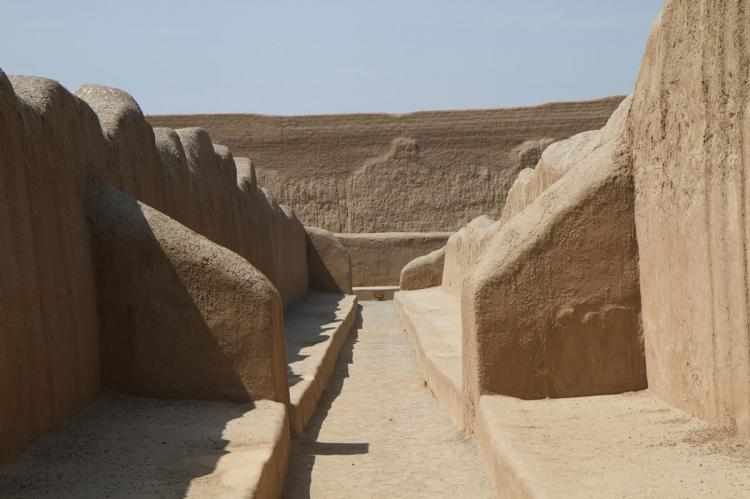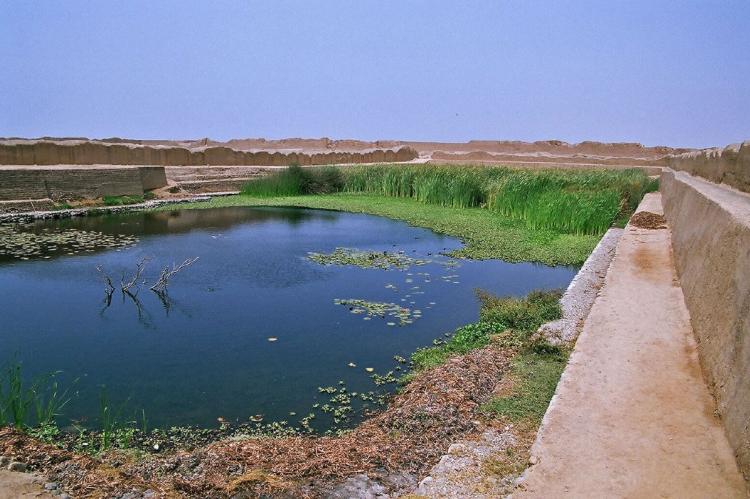Chan Chan Archaeological Zone (Peru)
Nestled on the northern coast of Peru, the archaeological site of Chan Chan stands as a testament to the ingenuity and architectural prowess of the Chimu civilization. Acknowledging its historical significance and architectural marvels, Chan Chan is designated a UNESCO World Heritage Site.
Chan Chan
The Ancient Citadel of the Chimu Empire
Nestled on the northern coast of Peru, about 480 kilometers (300 miles) north of Lima in the Moche Valley, the archaeological site of Chan Chan stands as a testament to the ingenuity and architectural prowess of the Chimu civilization. It was the largest adobe city in pre-Columbian America, encompassing approximately 20 square kilometers (7.7 square miles). In 1986, UNESCO recognized Chan Chan as a World Heritage Site, acknowledging its historical significance and architectural marvels.
Historical Significance
Chan Chan flourished between the 9th and 15th centuries AD and served as the capital of the Chimu Empire. With its intricate administrative and urban planning, this empire controlled a vast coastal territory in northern Peru. Chan Chan's construction began in the 9th century under the leadership of the first Chimu king, Tacaynamo, and continued through a succession of rulers.
Architectural Marvels
The city's most striking feature is its adobe architecture. The builders constructed massive adobe walls, some reaching up to 10 meters (32.8 feet). These walls were adorned with intricate friezes, geometric designs, and depictions of sea life, reflecting the Chimu people's strong connection to the ocean.
The city was organized into ten walled compounds, or "citadels," each with its purpose. These compounds included living areas, ceremonial spaces, and storerooms. The Tschudi Palace, one of the most well-preserved sections, is a prime example of the city's architecture and layout.
Cultural Significance
Chan Chan offers profound insights into the Chimu civilization's culture and way of life. The city's design and organization reveal the Chimu's advanced understanding of urban planning, architecture, and water management. It was also a hub of artistic expression, its walls adorned with intricate artwork depicting scenes from daily life and Chimu mythology.
Chan Chan Archaeological Zone
In 1986, the Chan Chan Archaeological Zone was designated as a UNESCO World Heritage Site. This recognition underscores its cultural and historical significance, emphasizing its role in preserving the heritage of the Chimu civilization. The site is a remarkable example of a highly organized urban center that thrived along the Peruvian coast for centuries.
Preservation Challenges
While Chan Chan has stood the test for over a thousand years, it faces numerous preservation challenges. The coastal environment, including the threat of El Niño, presents a continuous risk to the adobe structures. Human activities, including encroachment and looting, have also taken their toll.
Tourism and Education
Today, Chan Chan attracts visitors from around the world who come to marvel at its architectural wonders and learn about the Chimu culture. The site offers a unique opportunity to explore the history and achievements of this ancient civilization. Efforts are underway to balance tourism with preservation, ensuring that future generations can continue to appreciate and study the site.
Symbol of Achievement and Culture
Chan Chan, the ancient citadel of the Chimu Empire, stands as a symbol of human achievement and cultural significance. Its adobe architecture, urban planning, and artistic expression provide a window into the past, allowing us to appreciate the accomplishments of the Chimu civilization.
As a UNESCO World Heritage Site, it holds a special place in the world's cultural heritage, and efforts to preserve and protect it are ongoing. Chan Chan's legacy continues to inspire and educate, connecting us to the rich tapestry of our shared human history.





